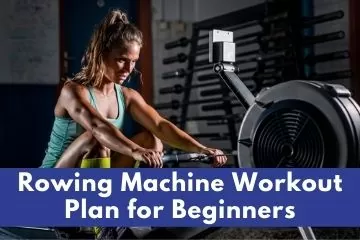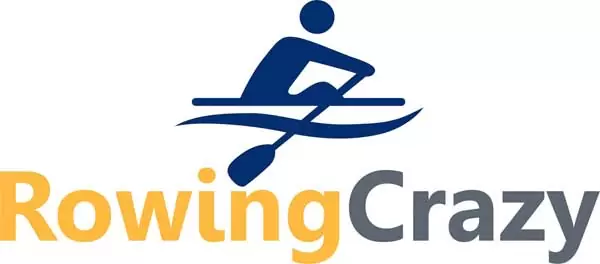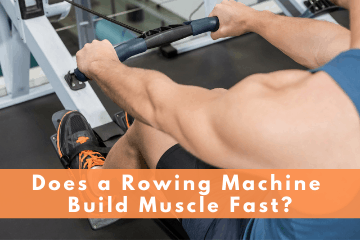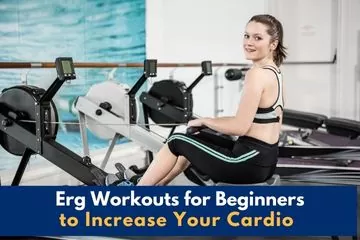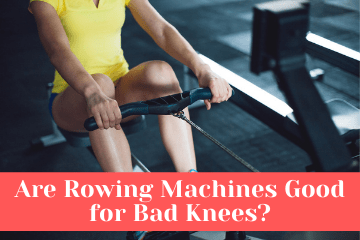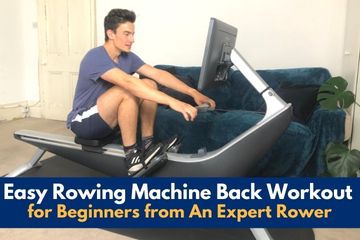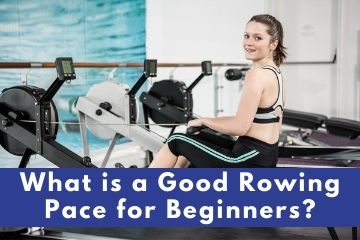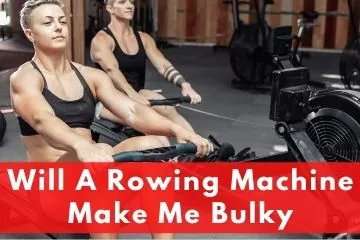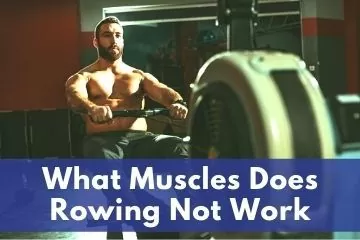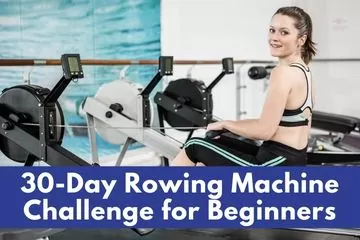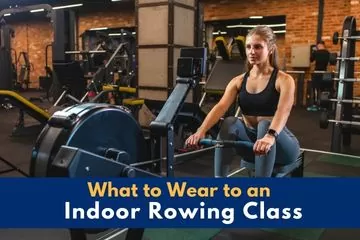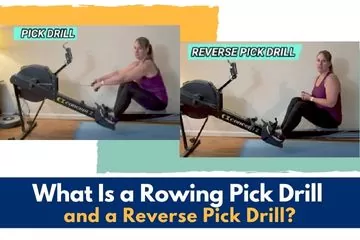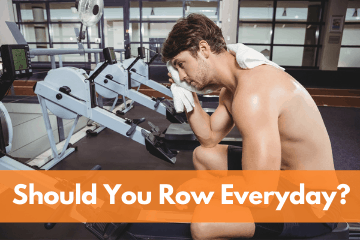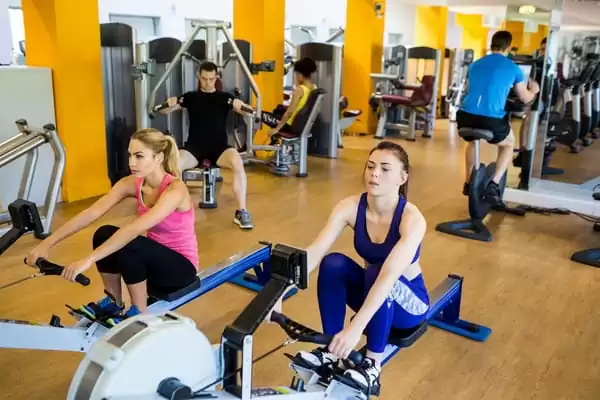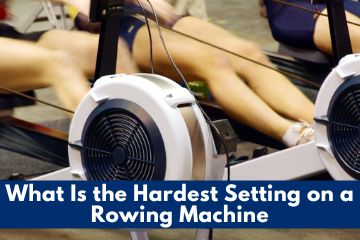Are you really new to rowing? Maybe you don’t even own a machine yet, or you’ve looked at the rowing machine at your gym and wondered if you should try it.
Has your daily schedule been so hectic that you finally gave up exercising? Perhaps you’re thinking that you really need to get back into shape and quit lying on the sofa? Well, today, I want to talk to all of you who are just starting out on your fitness journey.
I’m betting that many of you own a rower, but you haven’t really done too much with it because you don’t know where to start.
Oh, and the questions you must have! What is a comfortable speed? Should you go for meters or time when rowing? How can you go about building strength? Is a 30-minute rowing workout enough?
Although I am no longer a beginner, I talk to and see beginners on a regular basis. I’m often asked how and where to get started. If this sounds like you, then keep reading.
I’ve created a 30-day rowing machine challenge for beginners that will take you from the sofa to 2,000 meters. It’s not as difficult as it might sound to you right now. Put in a bit of effort, and you will reap huge rewards.
My Easy 30 day Rowing Challenge for Beginners!
Rowing is the perfect workout routine for every age and for all fitness levels.
Even if you’ve never, ever used a rower before, or if you haven’t exercised in years, you will be surprised at just how easy yet effective, a rowing machine workout is.
Here is my beginner’s workout plan in more detail. I’m going to go over each step to help you understand exactly what you should do.
Easy Step by Step: 30-Day Rowing Workout for Beginners
DAYS 1-30
|
ACTIVITIES
Remember to Keep a Good Rowing Form! |
| Days 1-3 |
-
- Warm up for 2 minutes
- Row at a comfortable pace. 2 minutes on, 30 seconds of rest. Repeat 5 times
|
| Day 4 |
Rest |
| Days 5-7 |
- 5 minute warm up
- Row 500 meters, rest for 1 minute
- Repeat 4 times. Try to maintain the same split time during all 4 sessions
- Cool down for 3 minutes
|
| Day 8 |
Rest |
| Days 9-13 |
- Day 9- Row 20 minutes, no breaks
- Day 10- Row 5 minutes with a 30 second break. Repeat 4 times
- Day 11- Rest
- Day 12- Row15 minutes without breaks
- Day 13-Row 20 minutes no breaks
|
| Day 14 |
Rest |
Day 15
Check Up Workout
Was this fairly easy? |
- 5 minute warm up
- Row 500 meters with a 1-minute rest. Repeat 6 times
- 3 -minute cool down
|
| Day 16 |
Rest |
| Days 17-18 |
- 5 minute warm up
- Row for 25 minutes. Moderate effort
- Cool down for 3 minutes
|
| Day 19 |
Rest |
| Days 20-21 |
Same as Days 17-18 |
| Day 22 |
Rest |
| Day 23 |
- 5 minute warm up
- Row for 30 minutes. Start pushing yourself to work a bit harder during the last 5 minutes
|
| Day 24-25 |
- 5 minute warm up
- Row 2 minutes at maximum effort. Rest for one minute, repeat 9 times
- Cool down for 3 minutes
- Repeat on day 25
|
| Day 26 |
Rest |
| Day 27-29 |
- 5 minute warm up
- 25 minutes of rowing. At the 6-minute and 19-minute marks, go all out for 1 minute
- Cool down for 3 minutes
|
| Day 30 2,000 Meter Test |
- 3 minute warm up
- Break it down into four sections of 500 meters each. Try to average 28 SPM during the entire workout.
YOU DID IT! |
If you’re looking at this table and thinking, “There is NO WAY I can do this,” I’m here to tell you that you can! If you are new to rowing be sure to also read my article – What’s a good 500m rowing time – Click Here to Learn More!
A Few Tips Before You Begin Your Rowing Workouts
First, if you have never used a rower before, you should learn how to do the rowing strokes properly.
Now I could continue writing, trying to explain how to sit, how to hold the handle, and all that, but nothing is like seeing this in person. Check out this short video for the proper form.
Learn from our Expert Rower Rachael Taylor on How to Use a Rowing Machine Properly:
While this video uses a NordicTrack rowing machine, the same technique applies to other rowing machines (click here to learn more on the correct rowing machine techniques for beginners ).
Take a few hours to master the proper technique. I promise that it will be worth every minute of it!
I recommend that you practice going very slowly, focusing only on your rowing form. Forget about doing power strokes or high-intensity workouts. Spend 10 or 15 minutes each day practicing your rowing technique before you try the above 30-day challenge.
Get a mirror or make a video of yourself rowing and check your rowing technique. This is going to save you so much time and pain (back pain, shoulder pain, wrist pain) if you do this first.
You should also be familiar with your rowing machine. Air rowers, such as the Concept2, have a little control called the damper, which controls the amount of air that enters the fan chamber. Set the drag factor very low to start with. You can always increase it later.
Other rowing machines use numbered knobs to tell you the amount of resistance.
Still, other machines, such as the Ergatta or the Hydrow, have preset resistance levels depending on your fitness level.
If you can adjust the resistance level, put it on a very low setting. You can always increase the resistance after you have mastered your rowing workout.
Last, always warm up and cool down. You don’t have to row to warm up. You can always jog in place or do some jumping jacks, but to avoid injuries, it is very important that you don’t skip these two steps.
Are you ready? Let’s get started!
The Full-Body Workout for Beginners
Using the chart above, I’m going to go over each step in detail so you won’t feel lost or wonder what a certain phrase might mean.
Days 1-3: You’re going to want to start off easy. Row at a comfortable pace for 2 minutes. What is a comfortable speed? Can you sing? If you can sing a song while rowing, that is a comfortable pace for you. Then you will take 30 seconds rest. Some people stop rowing completely, others just row more slowly. Do what feels good to you. Repeat this sequence 5 times.
Day 4: Active rest day! Now you can do other types of exercise if you like but nothing too strenuous. Think yoga, weight lifting, walking, or swimming. Or you can feel free to just let your body take a break and grow some beautiful new muscles!
Days 5-7: After your warm-up, row 500 meters and then rest for 1 minute. If you can, row very slowly during that 1 minute. If you have to stop to catch your breath, that’s fine too. Repeat this 4 times. Try to keep the same split time during each 500-meter section.
Day 8: Active Rest Day!
Days 9-14: On day 9, try to row 20 minutes without stopping. If you can do that, then on Day 10, row 5 minutes with a 30-second break. Repeat 4 times. Try to row just a bit faster. If you’ve been doing 18-20 strokes per minute (SPM) try to up your game to 20-22 SPM. Even if you can only keep up that pace for one 500 meter segment, that’s great!
Rest on Days 11 and 14.
On Day 12, try to row 15 minutes without a break. Again, try to up the pace just a smidgen if you can. This 30-day rowing challenge is more about quantity than speed, but if you can gain a little speed, you will burn fat like you never thought possible.
On Day 13, row for 20 minutes without a break, if you can.
Day 15: The Half-Way Point!- Aren’t you proud of yourself? You’re already halfway through this rowing challenge! Today, you are going to want to up your daily routine and add a bit more time. Try to row 500 meters, resting for one minute, then repeat 6 times. Don’t worry about speed.
Was this fairly easy? Did you break a sweat but it was totally doable? If it was easy or doable, you are on your way to enjoying the benefits of a fantastic indoor rowing workout (and I bet you are experiencing weight loss as well!)
If the Day 15 workout was too hard, don’t worry about it. Keep plugging along, you will catch up!
Days 16-22: Row for 25 minutes without stopping, if you can. Don’t worry so much about speed, just try to row without stopping.
Rest on Days 16,19, and 22
Day 23: We are taking things up to a new level on this third week and I know that you can do it! Row for 30 minutes without stopping. If you can, try to push yourself to put out max effort for the last minute of the workout. Or maybe even the last two minutes, if you can!
Days 24-26: Row 2 minutes at maximum effort. Rest for one minute, repeat 9 times. If you can’t keep up this pace, try resting for two minutes or you can alternate by rowing at maximum effort for two minutes, resting for one minute, then rowing at a comfortable speed for two minutes, rest for one minute, then repeat with the maximum effort. Do this same workout on Day 25.
Day 26: Active Rest Day
Days 27-29: You are almost there! I knew you could do it! Today, aim to do 25 minutes of rowing. At the 6 minute and 19-minute mark, go all out with high-intensity power strokes for 1 minute. If you feel that you can, try adding another minute of power strokes at the 10-minute mark.
Day 30: You’ve got this. This is the day that you do 2,000 meters with ease. Break it down into four sections of 500 meters each. Try to average 28 SPM during the entire workout. If you can’t manage that, do 28 SPM for two sessions and then do a slower 24 SPM for the other two sections.
I knew you had it in you! Look at you! All buff and strong! Side Note: Check out our other rowing machine workout plans for beginners
Where Do You Go From Here?
What you want to do after the 30-day challenge is up to you.
Some people find that they are happy to row 20-30 minutes each day, mixing up their rowing workouts.
Others plan on rowing a set number of meters each day or each week, such as 5,000 meters per day or 12,000 meters per week, broken up into different lengths daily.
Regardless of the workout plan that you decide on, be sure that your daily routine not only includes warm-up and cool-down sessions but that you allow at least 1 rest day out of each week.
Yes, you could row every day. There is plenty of aerobic benefits and weight loss to go along with that plan, but rowing workouts include using almost 90 percent of your body’s muscles in every stroke.
Imagine using 90 percent of anything without giving it time to “refill” or rest!
More than anything else, listen to your body. If you’re already tired before you do your workout, take a day or two off. If you feel pain or are really sore, take a day off.
I highly recommend massages and hot tubs now and again. These might seem like small pleasures, but there is a lot of healing power in these practices.
Massage can help you with muscle recovery, and there is nothing like a hot tub, jacuzzi, or even a hot bath to take away muscle soreness.
Can a Rowing Machine Blast Away Belly Fat?
The short answer here is, yes, it absolutely can.
The “but” portion (doesn’t it seem as though there is always a “but”?) is that you will need to row with some intensity.
This means that you can’t sit back and row at 16SPM and expect to lose weight and/or get rid of that spare tire around your middle.
You will also need to eat a balanced diet. The rule of thumb that I like to go by is the 80/20 rule. If you eat right 80 percent of the time, the other 20 percent won’t matter, especially if you’re doing rowing workouts at a fast pace.
Eat right, row faster, and row at least 30 minutes 5 or 6 days a week, and you will find that your heart rate stays lower, you will have more energy, you will get a really buff looking upper body and killer legs, as well as a tight abdomen.
Yes, you have probably heard that from every exercise machine you have ever tried, but if you put in the effort, you will see the results.
In fact, why not try it with the 30-day challenge? Take a picture of yourself before you begin. You might even want to note some of your measurements, such as waist, chest, arm, and thigh circumference. Write down your weight as well.
After you complete the 30-day rowing challenge, take another photo and measurements. I can guarantee that you will see some changes that will make you proud!
Must Read Article: Best Rowing Machine for CrossFit
Bottom Line on My 30 Day Rowing Challenge
I hope you have found this 30-day rowing challenge for beginners helpful.
If you should find that you can’t keep up with the schedule, don’t sweat it! Make it a 60-day challenge. Simply double the workout routines, and you’ll be able to row 2,000 meters in 60-days!
If you still haven’t bought your own rowing machine, you might find this interesting.
Hard work always pays off, friends! Stay focused, follow the schedule, and you will be a rowing pro before you know it!
Row happy, friends!
FAQs
1. Is it OK to row with bad knees?
Yes it is! A rowing routine is 60 percent legs, 30 percent arms, and 10 percent core. Since you row sitting down, using a rower is the perfect low-impact workout that will burn fat, get you fit, and let you experience weight loss like never before.
2. How far should I be rowing in 30 minutes?
For beginners, doing 1500-2000 meters in 30 minutes would be terrific! Don’t worry if you can’t manage that. Keep adding to your distance. Most people will find themselves doing 5,000 meters in 30 minutes within months.
3. How long does it take to see results from rowing?
Nearly everyone will see results within 2-6 weeks. Every person is different. If you’re rowing 5,000 meters a day, and your friend is rowing 2,000 meters per day, you will probably see results faster than your friend. Focus on getting in 30-minutes of exercise every day and eating a good diet. You will see results before you know it!
4. How much weight can I lose on a rowing machine?
A lot! I’ve seen people lose 50 or more pounds using a rowing machine. Some of those before and after pictures you see may have been doctored, but some are very real. You should eat a healthy diet as often as you can to help get better results.
Keep in mind that it’s more than just a number on a scale. You may actually weigh more than you expected, but it’s because you now have tons of new muscles on your arms and legs. If your jelly belly is gone, and you are proud of how you look and feel, who cares what the scale says?
5. Is a rowing machine good for flabby arms, too?
It sure is! The normal rowing motion tones your arms, back, shoulders, waist, and legs. All it takes is 30-minutes most days of the week to experience weight loss and toned, tight muscles all over your body! read more
